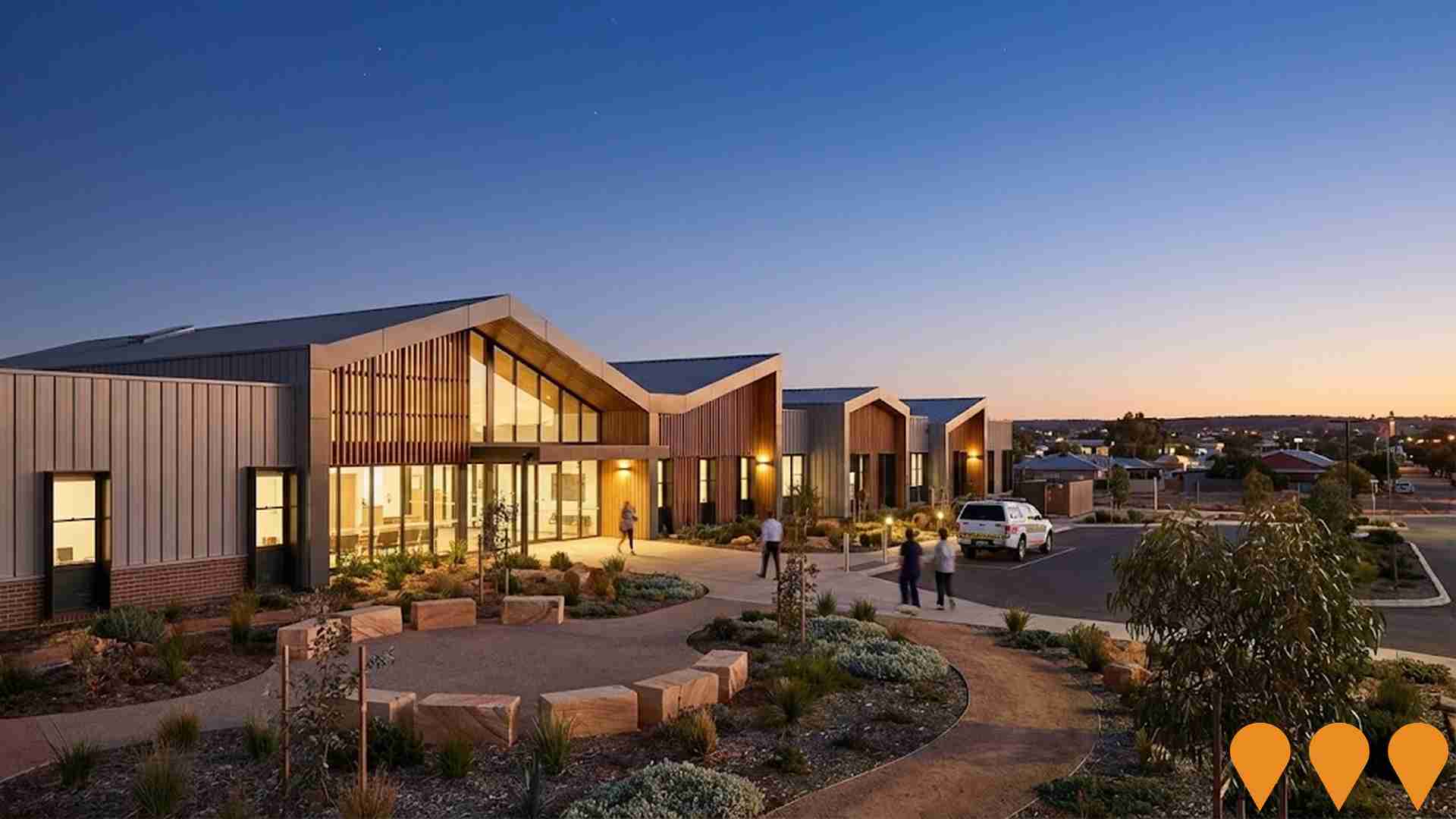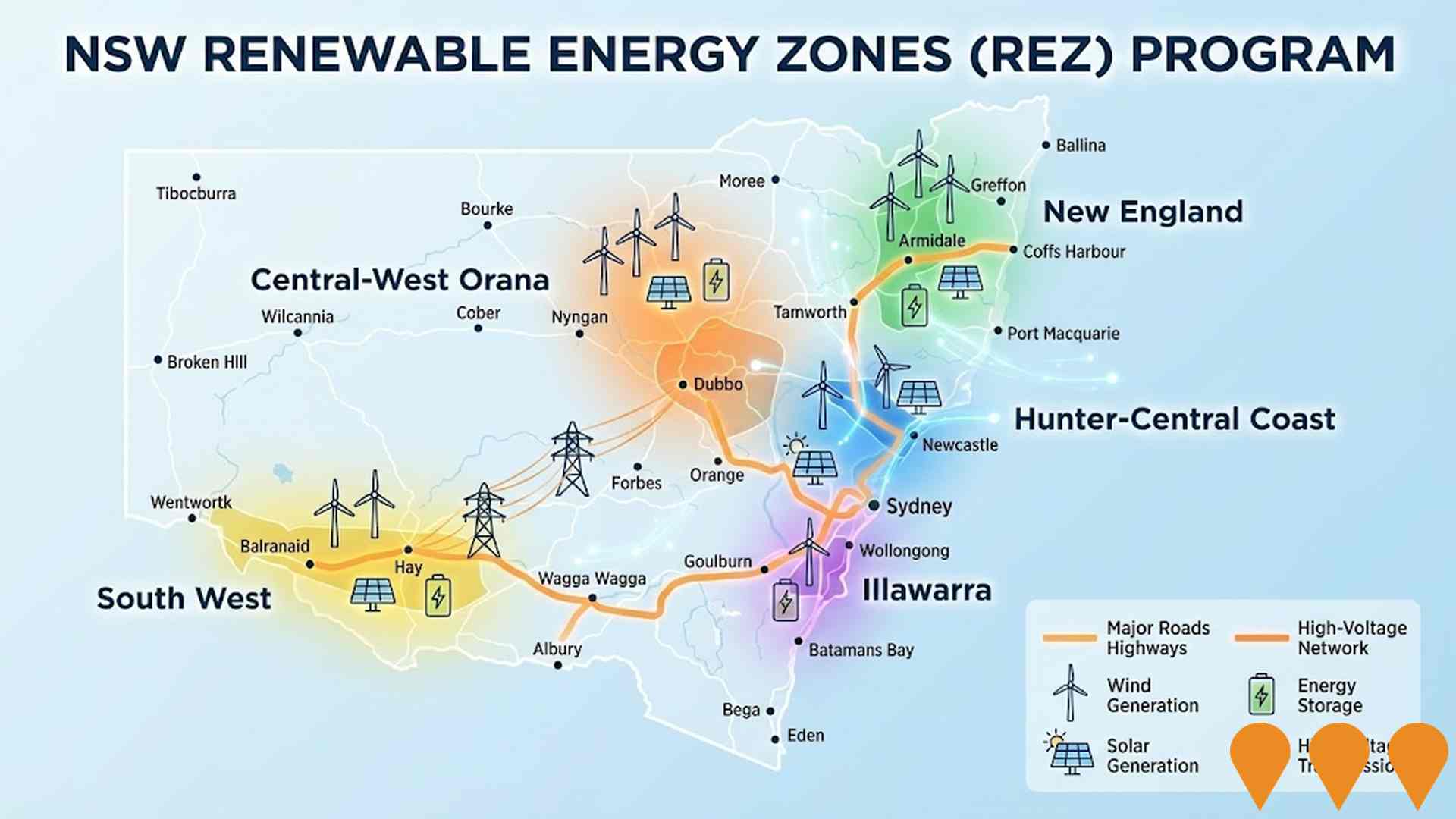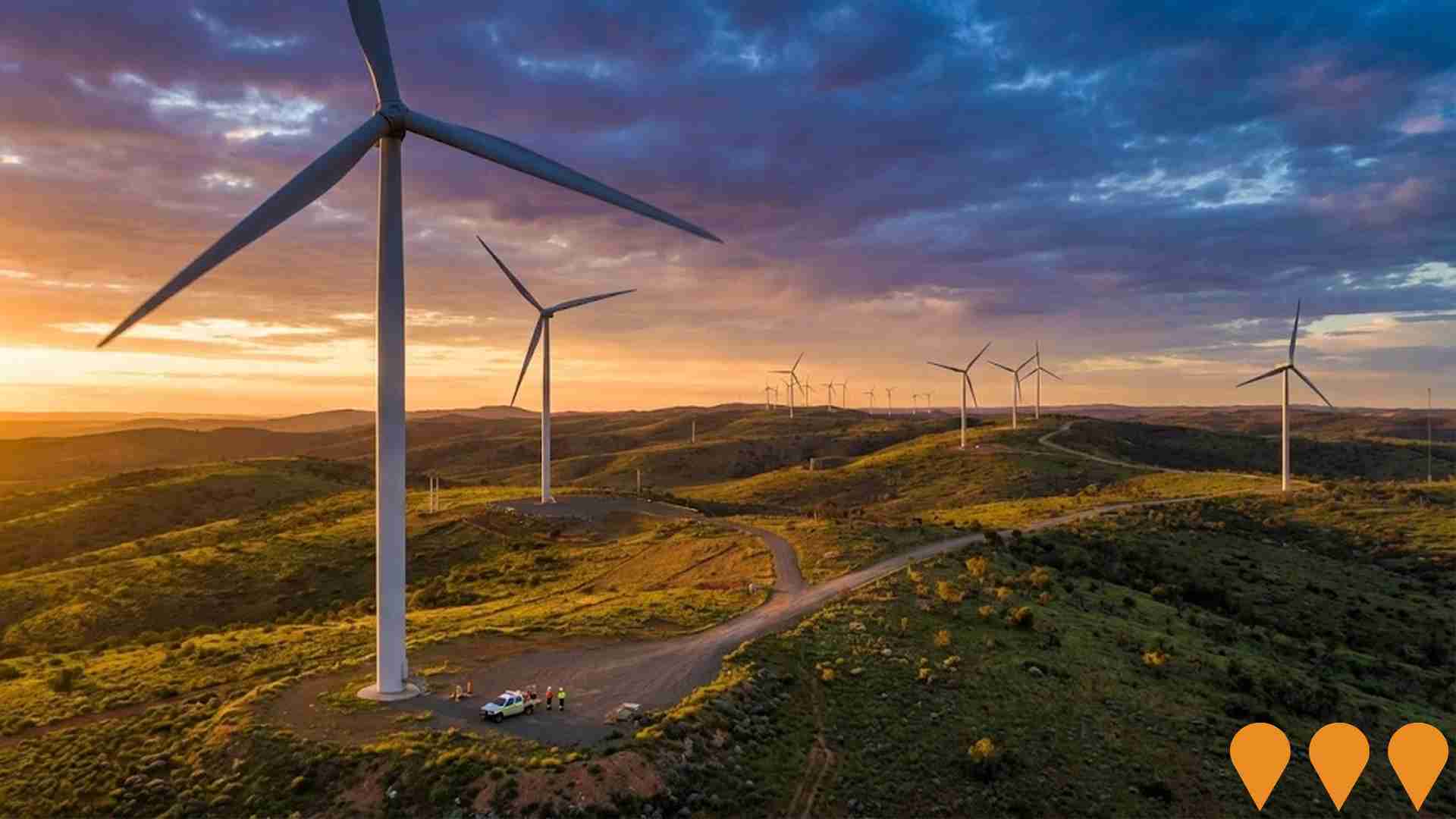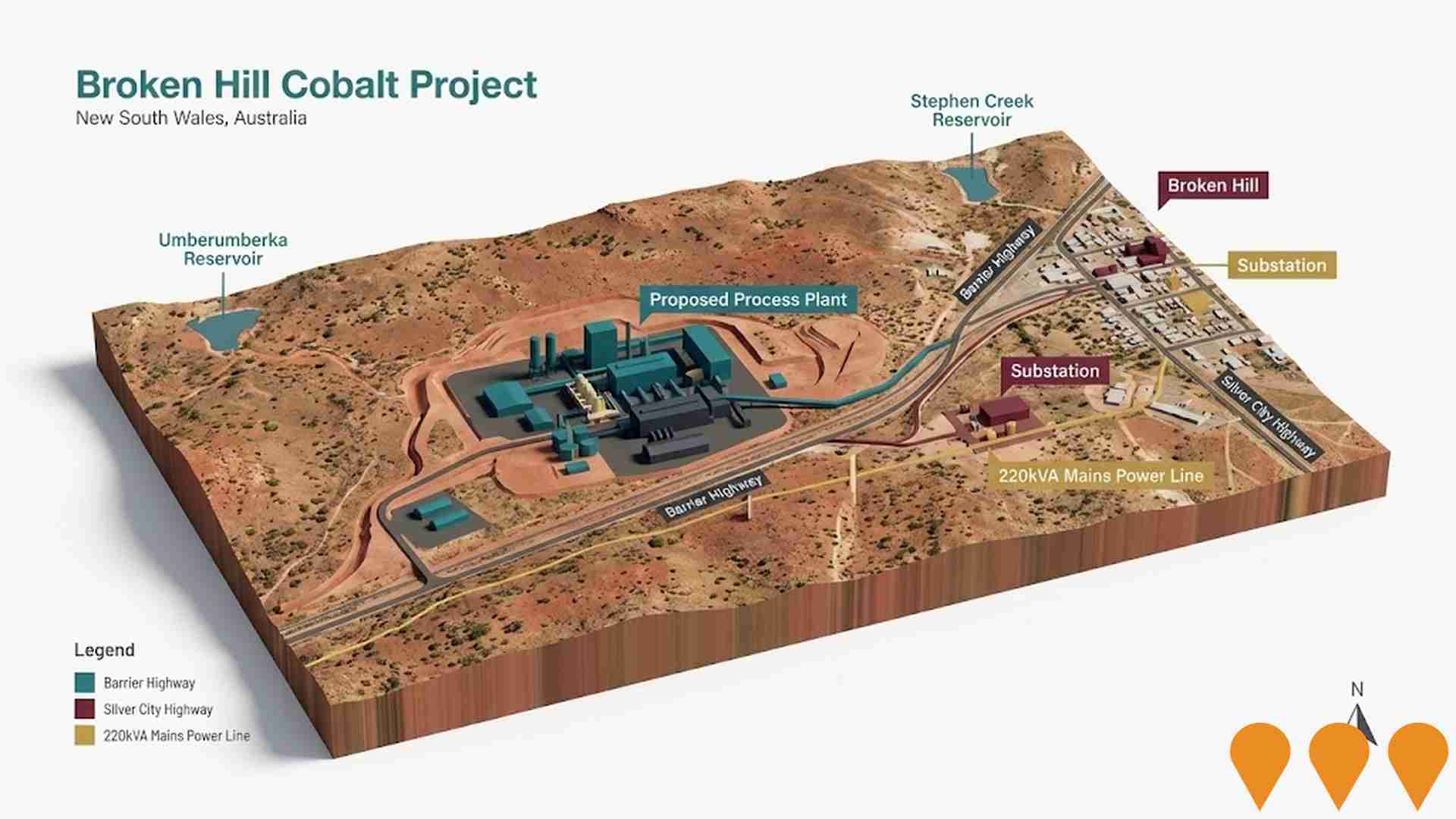Chart Color Schemes
est. as @ -- *
ABS ERP | -- people | --
2021 Census | -- people
Sales Activity
Curious about local property values? Filter the chart to assess the volume and appreciation (including resales) trends and regional comparisons, or scroll to the map below view this information at an individual property level.
Find a Recent Sale
Sales Detail
Population
Far West has shown very soft population growth performance across periods assessed by AreaSearch
Far West's population is approximately 2,508 as of August 2025. This figure reflects an increase of 220 people since the 2021 Census, which reported a population of 2,288. The growth was inferred from ABS estimates and validated new addresses between June 2024 and the Census date. The population density is 0.00 persons per square kilometer. Far West's 9.6% growth since the 2021 census exceeded regional averages. Natural growth contributed approximately 60.0% of overall population gains during recent periods.
AreaSearch uses ABS/Geoscience Australia projections for each SA2 area, released in 2024 with a base year of 2022, and NSW State Government's SA2 level projections for areas not covered by this data, released in 2022 with a base year of 2021. Projections indicate a decline in overall population to 2,112 persons by 2041, but specific age cohorts are expected to grow, notably the 85 and over age group by 48 people.
Frequently Asked Questions - Population
Development
The level of residential development activity in Far West is very low in comparison to the average area assessed nationally by AreaSearch
Far West has had minimal residential development activity, with an average of 2 dwelling approvals annually over the past five years, totalling 13. This low level of development is typical in rural areas where housing needs are modest and construction activity is limited by local demand and infrastructure capacity. It should be noted that the small sample size can significantly influence annual growth and relativity statistics.
Far West's development activity is notably lower compared to Rest of NSW, with levels also below national averages. Recent building activity has consisted solely of standalone homes, reflecting rural living preferences for space and privacy. The estimated population per dwelling approval in the area is 672 people, indicating a quiet, low activity development environment. With stable or declining population forecasts, Far West may experience less housing pressure, potentially creating favourable conditions for buyers.
Given stable or declining population forecasts, Far West may experience less housing pressure, creating favourable conditions for buyers.
Frequently Asked Questions - Development
Infrastructure
Far West has limited levels of nearby infrastructure activity, ranking in the 12thth percentile nationally
The performance of an area is significantly influenced by changes in local infrastructure, major projects, and planning initiatives. AreaSearch has identified ten projects that are expected to impact the area. Notable projects include the Broken Hill Health Service Redevelopment - MHIPU, ED Upgrade and Key Worker Accommodation, Silver City Energy Storage Centre (Hydrostor A-CAES), Broken Hill Community Health Centre, and Broken Hill Town Square Redevelopment. The following list details those projects considered most relevant.
Professional plan users can use the search below to filter and access additional projects.
INFRASTRUCTURE SEARCH
 Denotes AI-based impression for illustrative purposes only, not to be taken as definitive under any circumstances. Please follow links and conduct other investigations from the project's source for actual imagery. Developers and project owners wishing us to use original imagery please Contact Us and we will do so.
Denotes AI-based impression for illustrative purposes only, not to be taken as definitive under any circumstances. Please follow links and conduct other investigations from the project's source for actual imagery. Developers and project owners wishing us to use original imagery please Contact Us and we will do so.
Frequently Asked Questions - Infrastructure
Broken Hill Health Service Redevelopment - MHIPU, ED Upgrade and Key Worker Accommodation
Major health infrastructure project including a new purpose-built 8-bed Acute Mental Health Inpatient Unit (MHIPU), a $12 million Emergency Department (ED) upgrade with full internal refurbishment, and 20 new key worker accommodation units. Stage 2 of the ED upgrade was completed in July 2025, with the final stage currently underway and expected to be completed in late 2025. The new Acute MHIPU is open, providing modern mental health facilities for the Far West community. The 20 new key worker accommodation units are also complete, adjacent to the hospital campus to assist in recruiting and retaining healthcare workers. The overall redevelopment is being delivered by Health Infrastructure as part of the NSW Government's commitment to enhancing health services.

Broken Hill Community Health Centre
Integrated community health centre delivered as part of the Broken Hill Health Service Redevelopment. The facility includes a five-chair dental health clinic, child and family/community health services and new staff offices. Works also reconfigured parts of the main hospital's ambulatory care wing.

Silver City Energy Storage Centre (Hydrostor A-CAES)
A 200 MW / 1,600 MWh Advanced Compressed Air Energy Storage (A-CAES) facility that will repurpose underground workings at the disused Potosi mine near Broken Hill. The plant will provide more than 8 hours of long duration storage, form the backbone of a mini grid for Broken Hill, and replace ageing diesel generators while supporting new wind and solar generation in western NSW. The project secured NSW Government planning approval in February 2025 and is moving toward a three to four year construction program.

Murray River to Broken Hill Water Pipeline
270 km bulk water pipeline from the Murray River (Wentworth) to the Mica Street WTP at Broken Hill. Delivers up to ~37 ML/day with multiple pump stations and bulk storage, securing long term water supply for Broken Hill and nearby communities. Built for WaterNSW; operations and maintenance delivered under a JV including John Holland and TRILITY.

NSW Renewable Energy Zones (REZ) Program
NSW is delivering five Renewable Energy Zones (Central-West Orana, New England, South West, Hunter-Central Coast and Illawarra) to coordinate new wind and solar generation, storage and high-voltage transmission. The program is led by EnergyCo NSW under the Electricity Infrastructure Roadmap. Construction of the first REZ (Central-West Orana) transmission project commenced in June 2025, with staged energisation from 2028. Across the program, NSW targets at least 12 GW of new renewable generation and 2 GW of long-duration storage by 2030.

Silverton Wind Farm
199 MW onshore wind farm with 58 GE 3.x turbines located on the Mundi Mundi and Mount Robe Ranges in far west NSW. Fully commissioned in 2020. Operations of the wind farm transferred from AGL to Tilt Renewables in 2024 under long term arrangements. Generates around 780,000 MWh per year.

Broken Hill Cobalt Project
An integrated mine-refinery project focused on producing battery-ready cobalt products including cobalt sulphate from cobaltiferous pyrite deposits. The project has a global mineral resource of 126.5 Mt containing 87 kt cobalt and is positioned to become Australia's largest greenfield cobalt producer outside Africa. The project received a three-year extension of Major Project Status in July 2025, acknowledging its strategic significance to Australia's critical minerals sector and the Future Made in Australia agenda.

Broken Hill Town Square Redevelopment
Redevelopment of the central town square completed in March 2025 to enhance accessibility, functionality, and event hosting capabilities. Features include improved all-abilities access to central lawn, new seating at footpath and lawn level, misting sculptures for cooling, integrated planter boxes with trees, feature paving showcasing local rocks and minerals, new shade structure inspired by mining heritage, and reinstallation of the Women's Memorial. The project forms part of a Welcome Walk linking the railway station to Sturt Park.

Employment
Employment conditions in Far West face significant challenges, ranking among the bottom 10% of areas assessed nationally
Far West's workforce is balanced across white and blue collar jobs, with varied sector representation. As of June 2025, the unemployment rate stands at 7.6%.
In comparison to Rest of NSW's rate of 3.7%, Far West's rate is 3.9% higher, indicating room for improvement. Workforce participation in Far West lags behind Rest of NSW, at 46.2% compared to 56.4%. Key employment sectors include agriculture, forestry & fishing, education & training, and health care & social assistance. Notably, agriculture, forestry & fishing employs a significantly higher proportion of residents than the regional average, at 8.6 times the level.
Conversely, health care & social assistance employs only 7.6% of local workers, lower than Rest of NSW's 16.9%. Many Far West residents commute elsewhere for work based on Census data. Between June 2024 and May 2025, Far West's labour force decreased by 1.9%, with employment declining by 5.4%, leading to a rise in unemployment rate of 3.4 percentage points. In contrast, Rest of NSW experienced an employment decline of 0.1% and labour force growth of 0.3%, with a 0.4 percentage point increase in unemployment rate. Jobs and Skills Australia's national employment forecasts from May 2025 project overall employment growth of 6.6% over five years and 13.7% over ten years. Applying these projections to Far West's current employment mix suggests potential local growth of approximately 4.5% over five years and 10.4% over ten years, although these estimates are illustrative and do not account for localized population projections.
Frequently Asked Questions - Employment
Income
Income levels sit below national averages according to AreaSearch assessment
AreaSearch's latest postcode level ATO data for financial year 2022 shows that Far West has a lower median income of $49,913 compared to the national average of $62,238. The average income in Far West is $62,238, while Rest of NSW has a median income of $49,459 and an average income of $62,998. Based on Wage Price Index growth of 12.61% since financial year 2022, the current estimated median income in Far West is approximately $56,207 as of September 2025, with the average being around $70,086. Census 2021 data indicates that household, family and personal incomes in Far West fall between the 7th to 10th percentiles nationally. Income distribution shows that 26.6% of individuals in Far West earn between $800 - 1499, compared to metropolitan regions where 29.9% earn between $1500 - 2999. Housing costs are modest, with 92.3% of income retained, but total disposable income ranks at the 15th percentile nationally.
Frequently Asked Questions - Income
Housing
Far West is characterized by a predominantly suburban housing profile, with above-average rates of outright home ownership
In Far West, as per the latest Census evaluation, 93.9% of dwellings were houses, with the remaining 6.1% comprising semi-detached homes, apartments, and other types. This is similar to Non-Metro NSW's composition of 94.9% houses and 5.1% other dwellings. Home ownership in Far West stood at 49.2%, with mortgaged properties at 13.1% and rented ones at 37.7%. The median monthly mortgage repayment was $932, higher than Non-Metro NSW's average of $867 but significantly lower than the national average of $1,863. The median weekly rent in Far West was $150, lower than Non-Metro NSW's $205 and substantially below the national figure of $375.
Frequently Asked Questions - Housing
Household Composition
Far West features high concentrations of lone person households, with a higher-than-average median household size
Family households account for 61.3% of all households, including 20.4% couples with children, 26.2% couples without children, and 14.0% single parent families. Non-family households constitute the remaining 38.7%, with lone person households at 36.7% and group households making up 2.1%. The median household size is 2.4 people, larger than the Rest of NSW average of 2.2.
Frequently Asked Questions - Households
Local Schools & Education
Far West faces educational challenges, with performance metrics placing it in the bottom quartile of areas assessed nationally
The area's university qualification rate is 15.3%, significantly lower than the NSW average of 32.2%. Bachelor degrees are most prevalent at 10.1%, followed by postgraduate qualifications (2.8%) and graduate diplomas (2.4%). Vocational credentials are held by 35.9% of residents aged 15+, with advanced diplomas at 8.8% and certificates at 27.1%. Educational participation is high, with 33.1% currently enrolled in formal education: primary (14.7%), secondary (8.9%), and tertiary (1.7%).
Six schools operate within Far West, educating approximately 220 students; these include three primary and three K-12 schools. School places per 100 residents are lower at 8.8 compared to the regional average of 13.8, with some students likely attending schools in nearby areas.
Frequently Asked Questions - Education
Schools Detail
Nearby Services & Amenities
Transport
Transport servicing is moderate compared to other areas nationally based on assessment of service frequency, route connectivity and accessibility
Far West has 16 active public transport stops operating currently. These include a mix of train and bus services. There are 10 individual routes serving these stops, collectively providing 1,079 weekly passenger trips.
Transport accessibility is rated as limited in the region, with residents typically located 21460 meters from their nearest transport stop. The service frequency averages 154 trips per day across all routes, equating to approximately 67 weekly trips per individual stop.
Frequently Asked Questions - Transport
Transport Stops Detail
Health
Health performance in Far West is lower than average with common health conditions somewhat prevalent across both younger and older age cohorts
Far West faces significant health challenges with common health conditions prevalent across both younger and older age cohorts.
The rate of private health cover is approximately 51% of the total population (~1,281 people), slightly lagging that of the average SA2 area. The most common medical conditions are arthritis and asthma, impacting 8.2% and 8.2% of residents respectively. 68.9% of residents declare themselves completely clear of medical ailments, compared to 57.9% across Rest of NSW. The area has 21.1% of residents aged 65 and over (528 people), which is lower than the 23.4% in Rest of NSW. Health outcomes among seniors are particularly strong, performing better than the general population in health metrics.
Frequently Asked Questions - Health
Cultural Diversity
The latest Census data sees Far West placing among the least culturally diverse areas in the country when compared across a range of language and cultural background related metrics
Far West's cultural diversity was found to be below average, with 80.6% of its population being citizens, 95.1% born in Australia, and 98.0% speaking English only at home. Christianity is the main religion in Far West, comprising 53.8% of people, compared to 44.9% across Rest of NSW. The top three ancestry groups are Australian (27.0%), English (24.5%), and Australian Aboriginal (24.2%).
Notably, German ancestry is overrepresented at 4.1%, compared to the regional average of 3.6%, while Macedonian ancestry is present at 0.1%.
Frequently Asked Questions - Diversity
Age
Far West hosts an older demographic, ranking in the top quartile nationwide
Far West has a median age of 43, which is equal to the Rest of NSW figure and higher than the national average of 38. The age profile shows that those aged 45-54 make up 13.0%, while those aged 35-44 comprise 10.1%. Between the 2021 Census and now, the 75 to 84 age group has grown from 5.7% to 7.6%, and the 15 to 24 cohort has increased from 10.8% to 12.1%. Conversely, the 35 to 44 cohort has declined from 11.4% to 10.1%, and the 65 to 74 group has dropped from 12.9% to 11.7%. By 2041, demographic projections indicate significant shifts in Far West's age structure. The 85+ group is expected to grow by 95% (42 people), reaching 87 from 44. Notably, the combined 65+ age groups will account for all of the total population growth, reflecting the area's aging demographic profile. In contrast, the 25 to 34 and 0 to 4 cohorts are projected to experience population declines.


